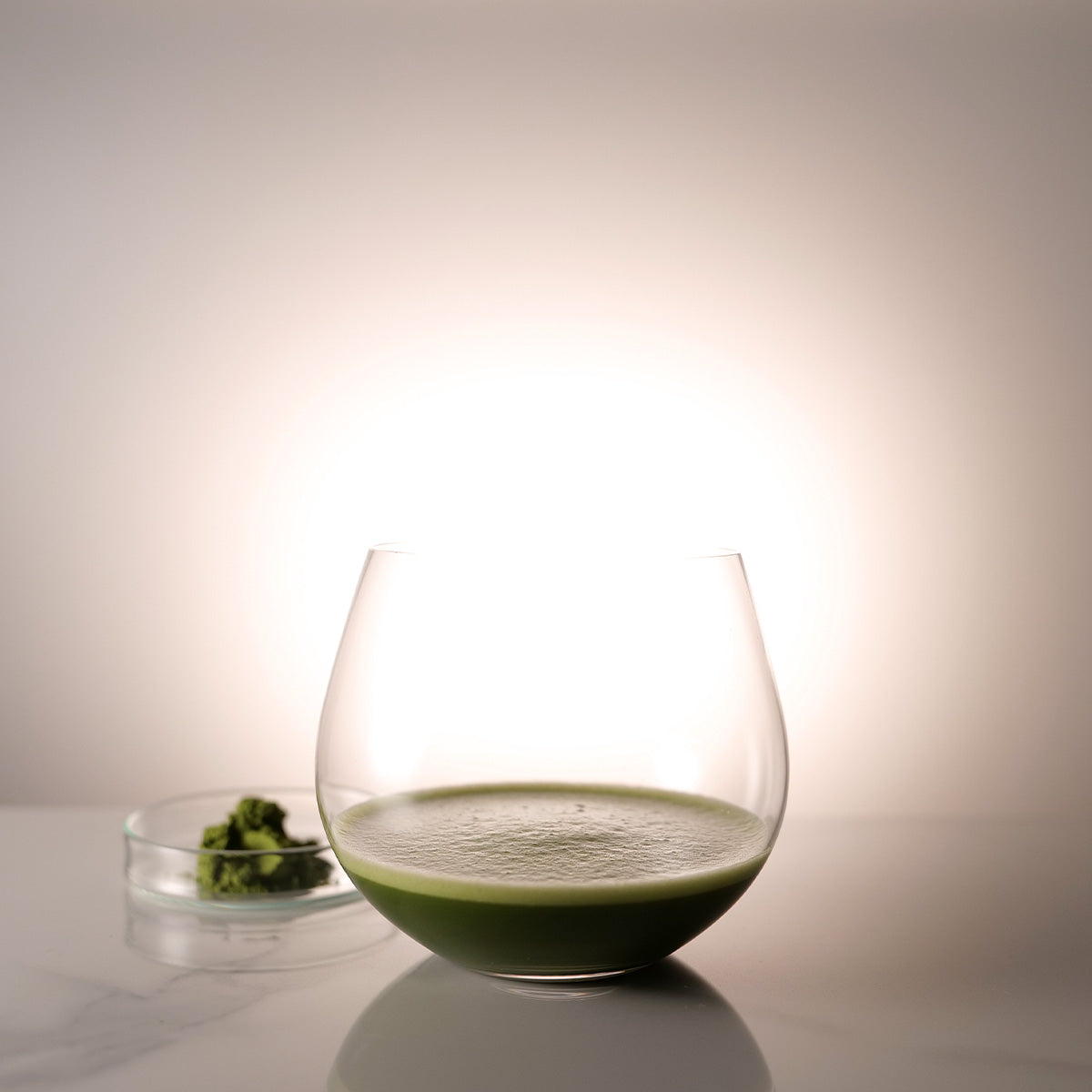Espresso of Japanese tea
Matcha — a signature Japanese luxury tea — is made by grinding shade-grown tea leaves with a millstone.It has a rich texture resulting from the direct consumption of tea leaves. Matcha is like the espresso of Japanese tea; extraction requires a different tea set and method from other tea types.

How to brew Matcha
Here, we will introduce the basic preparation method for Matcha.
Please refer to the product label for the optimal water temperature, water amount, and brewing time for each type of tea leaf.

#1 Measure
Place in matcha bowl while sifting matcha powder
Matcha powder tends to lump up easily due to static electricity. Sifting the powder leads to appealing matcha.
One cup of matcha is approximately 2-4 grams (Thin Matcha 2g / Thick Matcha 4g).

#2 Pour hot water
Cool boiled water before pouring into matcha bowl
Cool the hot water to 80°C (175°F) before use. Ideal water temperature and quantity are stated on tea bags.
Using 30-80 mg/l soft water will produce results closest to authentic Japanese tea.

#3 Stir
Swirl in a figure-eight motion and thoroughly dissolve powder in water
Using a chasen (tea whisk) to dissolve the powder will produce a creamier and richer flavor.
Generally, usucha (Thin Matcha) is made frothy to achieve a creamy finish, while koicha (Thick Matcha) is prepared without frothing to attain a more concentrated richness.

#4 Enjoy
Espresso of Japanese tea
Enjoy the creamy texture with an energetic, rich aroma and sweetness. Varieties include matcha lattes with milk or sauces for cooking and confectionery.

A signature Japanese luxury tea made by grinding shade-grown tea leaves with a millstone
Matcha, similarly to gyokuro, is processed by grinding shade-grown tea leaves with a millstone into 5-10 micron powder. It is a signature Japanese luxury tea of fundamental importance to Japanese tea ceremony.
It has also become popular as an ingredient for cooking and confectionery. Low to medium-grade tea leaves are generally used for seasoning, while delicate high-quality products are prepared for beverages and tea ceremony.

A harmony of energetic, rich tea-leaf sweetness and umami, with firm astringency
The water color of matcha is creamy and a very vivid yellow-green. When consumed, the tea leaves' concentrated sweetness and umami harmonize comfortably with a firm astringency.
Matcha offers an exclusive experience of its own: a vibrant and full-bodied flavor that derives from tasting tea leaves directly.
Higher-quality matcha is considered to be more vivid in color and have a stronger aroma and sweetness. Such products, particularly from prestigious producing regions such as Yame and Uji, are sold at upscale prices.

A must-try traditional Japanese tea for when you obtain your own tea set
You may feel that matcha is a highly-specialized and palatable Japanese tea as it requires a special tea set for high-quality brewing. However, there are countless ways to enjoy this fascinating tea.
A few of the more well-known adaptations that take advantage of its vibrant flavor include "matcha lattes" made with milk and "usu matcha" made with extra water.
Compared to Japanese teas that require extraction from tea leaves, matcha, made by dissolving powder, contains more abundant nutrients and the same amount of caffeine as coffee.


